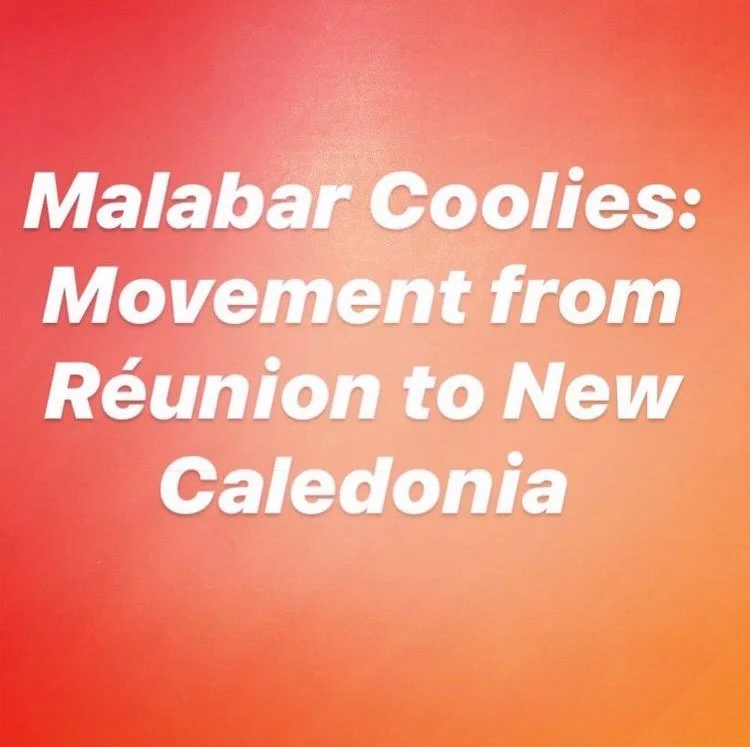Malabar Coolies
“The first contract workers to arrive in New Caledonia were 'coolies' or 'Malabars' from Réunion, followed shortly after by Melanesians from Vanuatu.
Given the dearth of experienced workers in New Caledonia, the Réunionese planters opted to employ their own skilled labour-force in the shape of 'coolies', whom they imported from Réunion.
These indentured workers, were often referred to as 'Malabars', a term borrowed from Réunion Creole (*based on the Malabar region in Kerala; it's the French colonial term to refer to all people from South India, such as Tamils, Malayalees, Telugus and Kannadigas; Réunion Malabar coolies were mainly Tamil indentured labourers) to designate labourers who, by the time they were being recruited for New Caledonia, formed a significant part of the Réunion population.
Both Guillain (governor of New Caledonia) and his counterpart in Réunion denied playing any part in an organised immigration scheme, and highlighted the fact that all the Indians who had been introduced into New Caledonia had been recruited in Réunion after having served at least one period of indenture in this colony...some indentured labourers had served as many as three periods of indenture (before coming to New Caledonia)...the majority of the Indians who arrived prior to 1869 were 'natives of the French territories of Pondicherry or Karikal' or were born in Réunion.
Some [labourers] came from the northern French territory of Chandernagor (*city in West Bengal) or from other parts of British India. It is difficult to be precise in determining exactly where all the labourers came from, as records in Réunion (as in New Caledonia) are notoriously imprecise, most often simply indicating that the worker in question was born 'somewhere in India'. And, if a worker boarded a 'coolie' ship in one of the port cities, it did not mean that [they were] born there.
The labourers were engaged for a period of five years, after which they could choose to return to India or try to get another contract in Réunion. Very few Indians made the trip home, most choosing to stay in Réunion (or go on to Mauritius) after their contracts ended. Those who stayed tended to settle around the sugar plantations where they continued to work. Many of them lived in poverty.
Intermarriage with other ethnic groups, both European and African, was widespread and tended to go hand in hand with integration into local society...This meant learning to speak Réunion Creole to understand and communicate with their creolophone foremen and fellow workers. All those who made the voyage to New Caledonia would have had some command of this language.
While most histories of the colony briefly mention the presence of Malabars in New Caledonia, the fact that 'coolies' from other ethnic groups were imported from Reunion is little known. Little information is available as to the ratio of white, metis, Malagasy or Black Reunion 'coolies' to the Malabars, and it is not known under what category they were included in censuses. It would seem, however, that this group disappeared very quickly into the general population after they had finished their period of indenture.
Like the Malabars, these 'ex-coolies' generally moved into menial jobs after their engagements had ended, working as cooks, launderers, seamstresses, gardeners, labourers and domestics. Some became small-scale farmers and sugar planters.”
-Who were the Réunion ‘Coolies’ of 19th-century New Caledonia?, Karin Speedy
